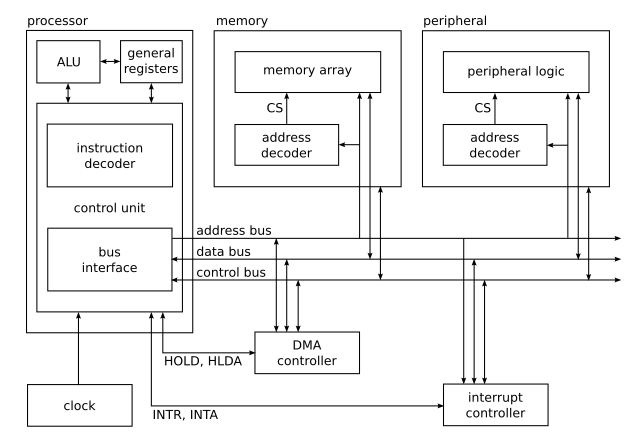
 Data Structure
Data Structure Networking
Networking RDBMS
RDBMS Operating System
Operating System Java
Java MS Excel
MS Excel iOS
iOS HTML
HTML CSS
CSS Android
Android Python
Python C Programming
C Programming C++
C++ C#
C# MongoDB
MongoDB MySQL
MySQL Javascript
Javascript PHP
PHP
- Selected Reading
- UPSC IAS Exams Notes
- Developer's Best Practices
- Questions and Answers
- Effective Resume Writing
- HR Interview Questions
- Computer Glossary
- Who is Who
What is computer architecture?
Computer architecture can be defined as a set of rules and methods that describe the functionality, management and implementation of computers. To be precise, it is nothing but rules by which a system performs and operates.
Sub-divisions
Computer Architecture can be divided into mainly three categories, which are as follows −
Instruction set Architecture or ISA − Whenever an instruction is given to processor, its role is to read and act accordingly. It allocates memory to instructions and also acts upon memory address mode (Direct Addressing mode or Indirect Addressing mode).
Micro Architecture − It describes how a particular processor will handle and implement instructions from ISA.
System design − It includes the other entire hardware component within the system such as virtualization, multiprocessing.
Role of computer Architecture
The main role of Computer Architecture is to balance the performance, efficiency, cost and reliability of a computer system.
For Example − Instruction set architecture (ISA) acts as a bridge between computer's software and hardware. It works as a programmer's view of a machine.
Computers can only understand binary language (i.e., 0, 1) and users understand high level language (i.e., if else, while, conditions, etc). So to communicate between user and computer, Instruction set Architecture plays a major role here, translating high level language to binary language.
Structure
Let us see the example structure of Computer Architecture as given below.
Generally, computer architecture consists of the following −
Processor
Memory
Peripherals
All the above parts are connected with the help of system bus, which consists of address bus, data bus and control bus.
The diagram given below depicts the computer architecture −


